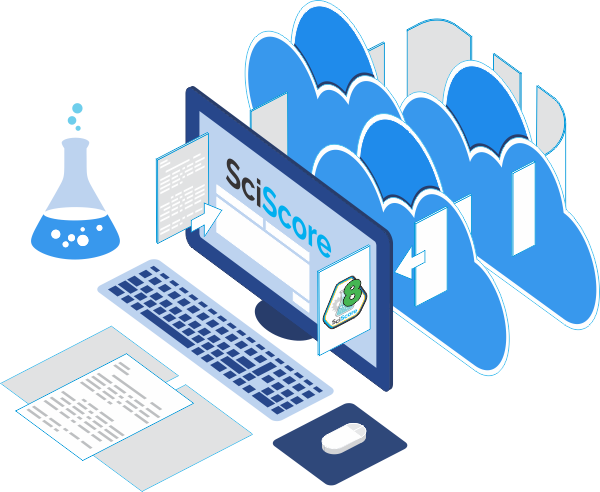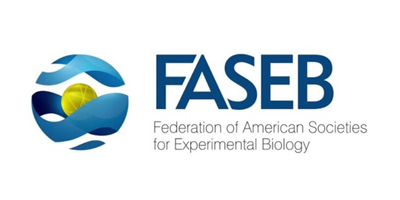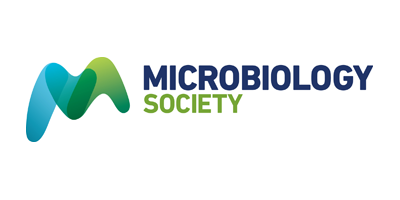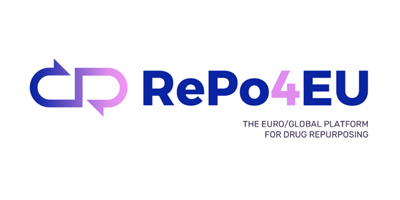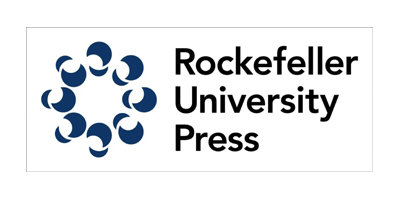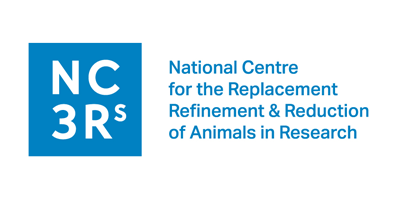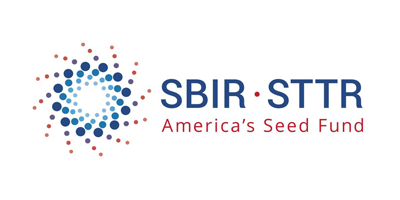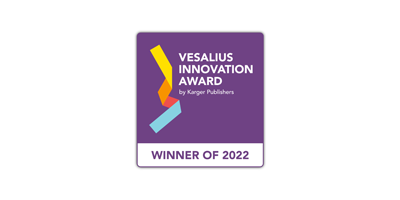"The SciScore Version 3 beta update will bring along a major improvement for our users with an easy to interpret cover page. At a glance they will be able to see where they don’t adhere yet to policy guidelines and we’ve create a brand new statistics module to help researchers to provide the right information on their reporting."
Anita Bandrowski, CEO of SciScore

Analyze your key resources
SciScore helps ensure key resources like antibodies, cell lines, and organisms, are described in enough detail (e.g. vendor names, catalogue numbers, RRIDs, etc.), so that other researchers can try to replicate a studies findings.

Generate an MDAR report fast
Many journals, like Science for instance, currently advise researchers to complete MDAR checklists when submitting their manuscripts. SciScore can produce an MDAR report for your research in under a minute!

Track journal reproducibility with RTI
Using SciScore, the Rigor and Transparency Index (RTI) was created in 2020. It provides information on both the general state of a journal’s rigor & transparency practices, as well as a much more detailed picture.
Frequently Asked Questions
SciScore was designed to be fast and intuitive, please contact us if you need assistance.

General Questions
What will I receive after I submit my methods section?
SciScore returns three reports (downloadable all together in a .zip file)
and a score between 1 and 10. These reports cover a wide range of
rigor criteria and research resource types (e.g., antibodies, cell lines, plasmids, etc.). Scores range between 1 and
10 and are based on both rigor adherence and resource reporting completeness.
How can I improve my SciScore?
Wherever possible, we try to provide useful suggestions to help you improve your report, e.g. a
missing RRID or a typo in your dataset link. Adding those to your methods section might already
improve your SciScore. Next is to look more thoroughly at the
various sections of the report to see where information is expected but missing.
Addressing certain rigor criteria in the methods section like blinding, randomization of groups, and power analysis, even if it is to simply state that they are not relevant to the study, should improve your score. In general, though, the more rigor criteria you include, the higher your score will be.
For each research resource that is identified, adding a research resource identifier (RRID) or other important metadata, like the catalog number and vendor, should improve the score. Please note, every RRID is associated with product information. SciScore will try to match the sentence context with this data, and if this information does not match, the score will be lower. If English is not your native language, you may consider sending your methods section to a colleague to help improve sentence clarity.
Addressing certain rigor criteria in the methods section like blinding, randomization of groups, and power analysis, even if it is to simply state that they are not relevant to the study, should improve your score. In general, though, the more rigor criteria you include, the higher your score will be.
For each research resource that is identified, adding a research resource identifier (RRID) or other important metadata, like the catalog number and vendor, should improve the score. Please note, every RRID is associated with product information. SciScore will try to match the sentence context with this data, and if this information does not match, the score will be lower. If English is not your native language, you may consider sending your methods section to a colleague to help improve sentence clarity.
If I find something wrong with my report, what do I do?
Please contact us to report any problems. SciScore
can only learn from its mistakes if it knows about them.
What happens when a journal submits my methods section for me?
If a journal submits your paper, they must follow journal specific privacy policies. As the submitting party,
the journal would be responsible for any actions taken as a result of SciScore.
Materials, Design, Analysis, Reporting (MDAR)
What is MDAR?
MDAR (Materials, Design, Analysis, and Reporting) is a multidisciplinary research framework aimed at helping authors,
editors, and other interested parties increase reporting transparency within life science manuscripts. The MDAR
checklist aims to serve as a generic, minimum reporting standard for life science studies, a complement to journal
and community-specific guidelines and initiatives.
The MDAR checklist has been a collaborative effort from 13 high-impact journals (i.e. eLife, Science, PNAS, etc.) across a variety of publishers. Using SciScore, you can automatically check your manuscript against the checklist in under a minute.
The MDAR checklist has been a collaborative effort from 13 high-impact journals (i.e. eLife, Science, PNAS, etc.) across a variety of publishers. Using SciScore, you can automatically check your manuscript against the checklist in under a minute.
Why would MDAR be relevant for me?
As of 2020, the journal Science requires an MDAR report to be submitted with acceptance of each paper, you
can generate one here in as little as 1 minute.
By serving as a generic, minimum reporting standard, MDAR hopes to improve reporting standards compliance across a variety of life science guidelines with the end goal being to improve research reproducibility. In addition, 13 high-impact journals (i.e. eLife, Science, PNAS, etc.) have begun testing the MDAR checklist with potential for expanded implementation in the near future.
By serving as a generic, minimum reporting standard, MDAR hopes to improve reporting standards compliance across a variety of life science guidelines with the end goal being to improve research reproducibility. In addition, 13 high-impact journals (i.e. eLife, Science, PNAS, etc.) have begun testing the MDAR checklist with potential for expanded implementation in the near future.
Can I just use SciScore's automatically generated MDAR report?
We welcome you to use our automatically generated MDAR reports when submitting to journals that require such a report, however, please be mindful that SciScore cannot detect every MDAR criteria as of yet (currently, ~80%). We point out where information is missing,
but you may need to fill in additional information as requested by the journal that you are submitting to.
Research Resource Identifiers (RRIDs)
What is an RRID?
RRIDs are persistent, unique identifiers (PIDs) that identify antibodies, cell lines, plasmids, transgenic
organisms, and software projects. Basically, RRIDs are to research resources to what ORCIDs are to researchers.
To find RRIDs, please go to https://scicrunch.org/resources and type in the resource's catalog number for the best results.
To find RRIDs, please go to https://scicrunch.org/resources and type in the resource's catalog number for the best results.
Why should I include RRIDs in my research?
RRIDs help researchers more easily identify and find the reagents and tools being used in research papers.
The absence of such persistent identifiers makes it a lot more difficult, if not impossible, to reproduce the
work found in an article thereby hindering scientific progression.
RRIDs help to limit confusion about the exact resources used in research papers, which in turn helps to promote reproducibility. Also, with the inclusion of a resource ID tag in JATS 1.2 (the NISO standard for journal articles), RRIDs have become even easier to find.
RRIDs help to limit confusion about the exact resources used in research papers, which in turn helps to promote reproducibility. Also, with the inclusion of a resource ID tag in JATS 1.2 (the NISO standard for journal articles), RRIDs have become even easier to find.
Some of my resources don’t have RRIDs. What should I do?
All key resource types (antibodies, cell lines, organisms, plasmids, and software) should have an RRID.
If you cannot find an RRID, please visit https://scicrunch.org/resources/about/resource
to register your resource.
Star Methods Table
What is a STAR methods table?
The STAR (structured, transparent, accessible reporting) methods table is a table
framework created by Cell Press to improve the reproducibility of scientific
research. More information regarding the STAR methods table can be found
here.
Can I use the SciScore generated table as is?
Most likely no, you will need to fill in additional information as requested by the
journal that you are submitting to. We try to point out where information is
missing, however, SciScore currently only recognizes antibodies, cell lines,
transgenic organisms, plasmids, oligonucleotides, and software projects. For more information,
please check out our STAR page.
STAR methods tables ask for things that SciScore does not return to
me, why not?
As of now, SciScore has been trained to detect the following types of research resources:
antibodies, cell lines, transgenic organisms, plasmids, oligonucleotides, and
software projects; it does not currently recognize other types of reagents that
STAR requires. If you have any recommendations for what SciScore should find in the future, please let us know.
ORCID
What is an ORCID?
ORCID is a persistent, unique identifier used to properly distinguish researchers from one another. ORCIDs help create automatic linkages between researchers and their work, ensuring that their research is properly attributed. If you do not have an ORCID account or wish to learn more, please go to
https://orcid.org.
Why do you need my ORCID?
SciScore is a tool that we make available to the scientific community, however
we have no way to verify that you are indeed a researcher without a helping hand
from our colleagues at ORCID. Signing up for ORCID is both easy and free, and
it is now required when submitting to many journals. If you do not have an
ORCID account, please go to https://orcid.org to create one.
Can I use SciScore without an ORCID?
Yes, you may use a valid credit card to access SciScore. Several packages are
available for journal editorial staff and technical reviewers as well.
Privacy & Security
What do you do with my information?
Our policy is to purge your data from the SciScore servers as soon as possible to
protect your information, only the report remains in your account. Please see the
full terms and conditions page.
Do you keep my score private?
Yes, any score obtained through SciScore is private and visible only to your user
account.

SciScore Pricing
Is your journal using Editorial Manager or eJournalPress? Contact us to discuss integrating SciScore into your submission pipeline today!

SciScore gets smarter with every suggestion. We appreciate your feedback.
Please reach out if you are interested in setting up a webinar for your group; we will be happy to facilitate that for you! To communicate with our team, please complete the form below and click submit.

